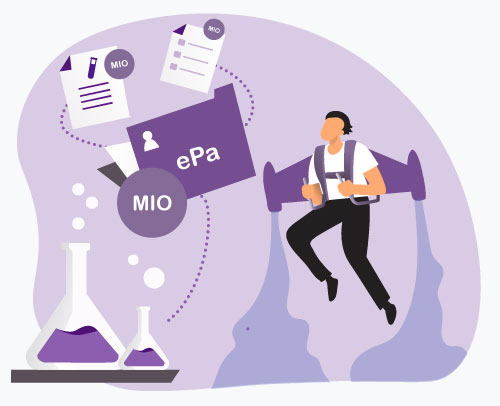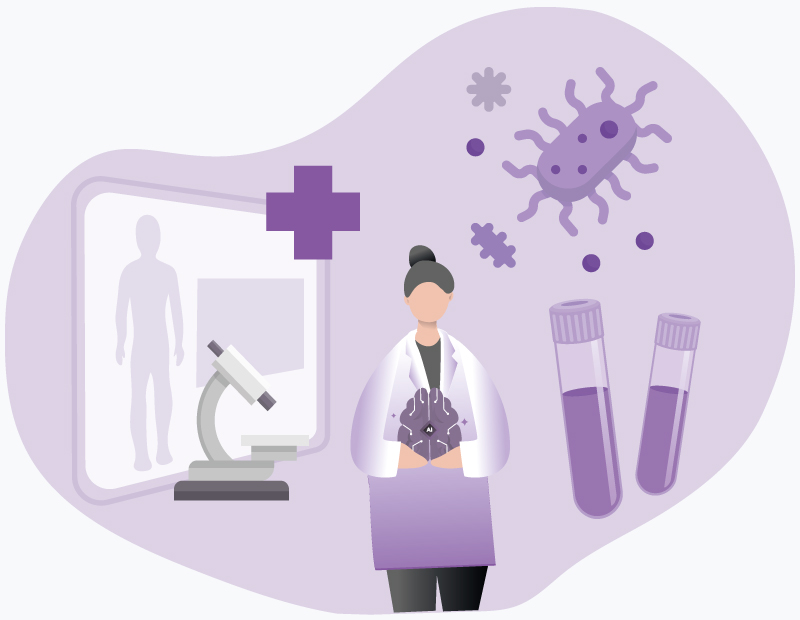With the mandatory introduction of the electronic patient record (ePA) for all insured persons as of January 15, 2025, and the obligation to integrate structured laboratory reports, the MIO Laboratory Report becomes a central component of digital healthcare in Germany (Trillium, KBV). Starting in the second half of 2025 – beginning with clinical chemistry and later expanded to include microbiology – the standardized MIO Laboratory Report will be mandatory for laboratories and software providers. For this, the internationally established standards LOINC (test identification), UCUM (units), SNOMED CT (quality, methodology), and FHIR (data exchange) are indispensable (Trillium).
The following steps illustrate how laboratories can pragmatically and effectively achieve MIO readiness with medicalvalues – from master data to ePA integration.
1. Master Data Preparation & LOINC Mapping
Laboratories begin by extracting data from their Laboratory Information System (LIS) – focusing on analysis parameters and master data. medicalvalues recommends starting with the 300 most important parameters and grouping the analysis paths by departments or wards – a “department-based approach” that combines high impact with low initial effort.
Process steps:
Extract master data from the LIS
Select and prioritize the most relevant parameters
Encode with LOINC – supported by domain expertise and optionally with the semi-automated medicalvalues LOINC Mapper
Quality assurance and review by domain experts
This approach creates a solid foundation for reliable, standardized laboratory mapping and is central to the validity of the MIO Laboratory Report.
2. UCUM & SNOMED CT Coding
Following the LOINC step comes semantic enrichment:
Unit coding: Use of UCUM (e.g., “mg/dL”) to ensure consistent, machine-readable unit representations (alm-ev.de, BfArM).
Optional – Qualitative results & methodology: Supplement with SNOMED CT to describe, for example, reference methods or non-numerical findings (BfArM).
This dual coding principle is the key to semantic interoperability and precise interpretation – for both users and systems.
3. FHIR Integration of Laboratory Transaction Data
The FHIR standard enables syntactic interoperability – medicalvalues translates transaction data from LDT/HL7 systems into structured FHIR resources:
Map master, result, and method data to FHIR resources (e.g., Observation, DiagnosticReport).
Align with German/European implementation guides (KBV, gematik standards).
On this basis, a consistent, standards-compliant data model is created – a key building block for ePA integration.
4. Platform Service: HL7/LDT → MIO-ready FHIR Bundle
The medicalvalues platform handles central mapping, conversion, and packaging into an MIO-compliant FHIR bundle:
Input: Laboratory data in HL7 or LDT format
Processing: LOINC, UCUM, SNOMED CT classification and FHIR formatting
Output: Ready-to-use MIO Laboratory Report bundle, transferable via KIM/telematics infrastructure (TI) directly into the ePA
This system enables seamless digital report transmission, avoids media disruptions, and minimizes manual effort – regardless of the existing IT infrastructure.
Iterative Implementation & Piloting
Instead of a full-scale rollout, a phased approach is recommended:
Starter phase: Implementation for up to 300 key parameters
Piloting: Testing in laboratory operations – technical and organizational validation
Scaling: Gradual integration of all laboratory processes and areas
Modular expansion: Inclusion of additional diagnostic areas (e.g., microbiology from 2026)
This modular approach enables early wins, reduces risks, and ensures robust data quality.
Sustainability and Quality Assurance
For long-term sustainable processes, the following aspects are key:
Ongoing LOINC updates for internal changes (e.g., new laboratory parameters) and external adjustments (e.g., monitoring and implementing official LOINC releases).
Compliance with international standards such as FHIR, gematik requirements, and EU frameworks.
Working group involvement: medicalvalues is actively represented in the INA/gematik working group, Interop Council, KBV MIO, and ALM e.V. (Trillium, alm-ev.de).
Conclusion
The steps – master data mapping, semantic coding, FHIR integration, and MIO bundle generation – form the backbone of every successful MIO strategy. Through piloting, continuous development, and active participation in expert committees, ePA readiness is achieved – scalable, sustainable, and future-proof.
medicalvalues supports laboratories along this path with tools, expertise, and platform services – from master data extraction to MIO bundle integration. In doing so, not only is the 2025 regulatory roadmap met, but a long-term leap in quality for healthcare and interoperability is initiated.
Start today – because MIO readiness begins now.



